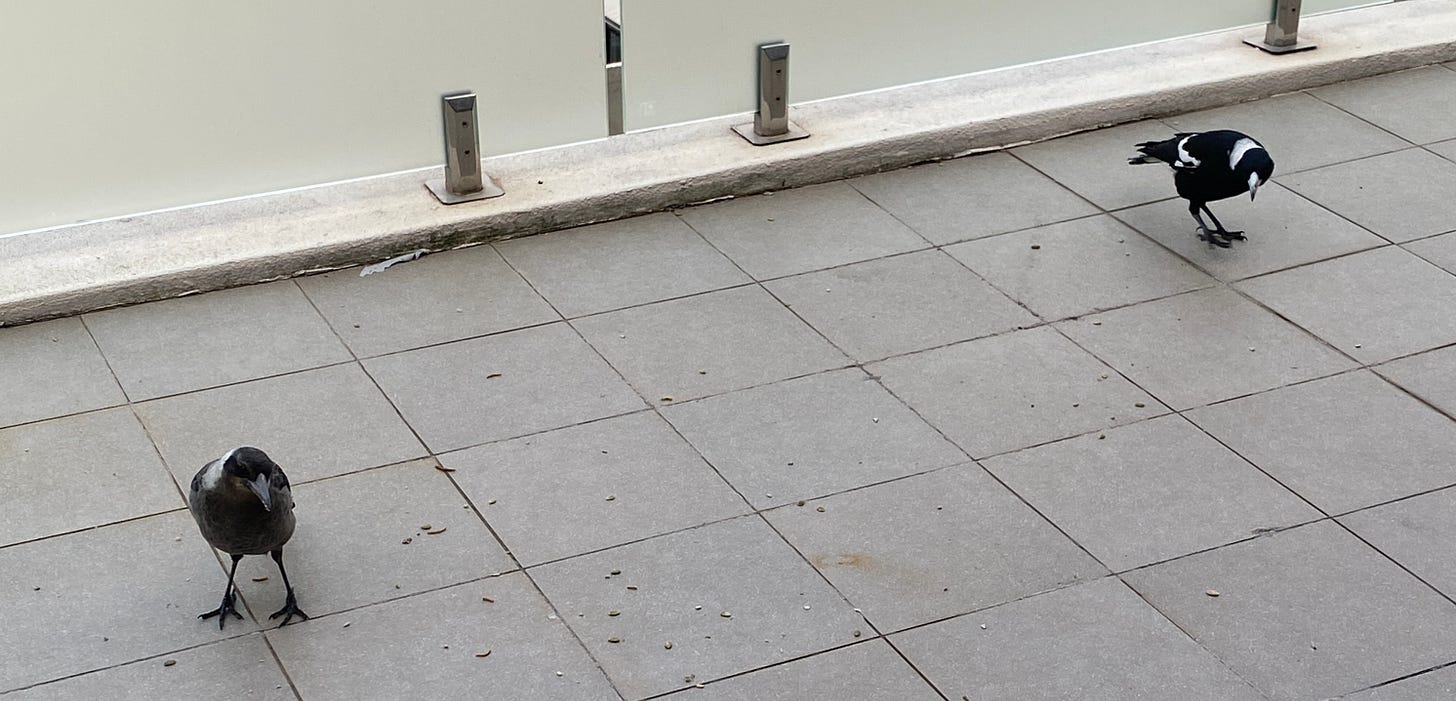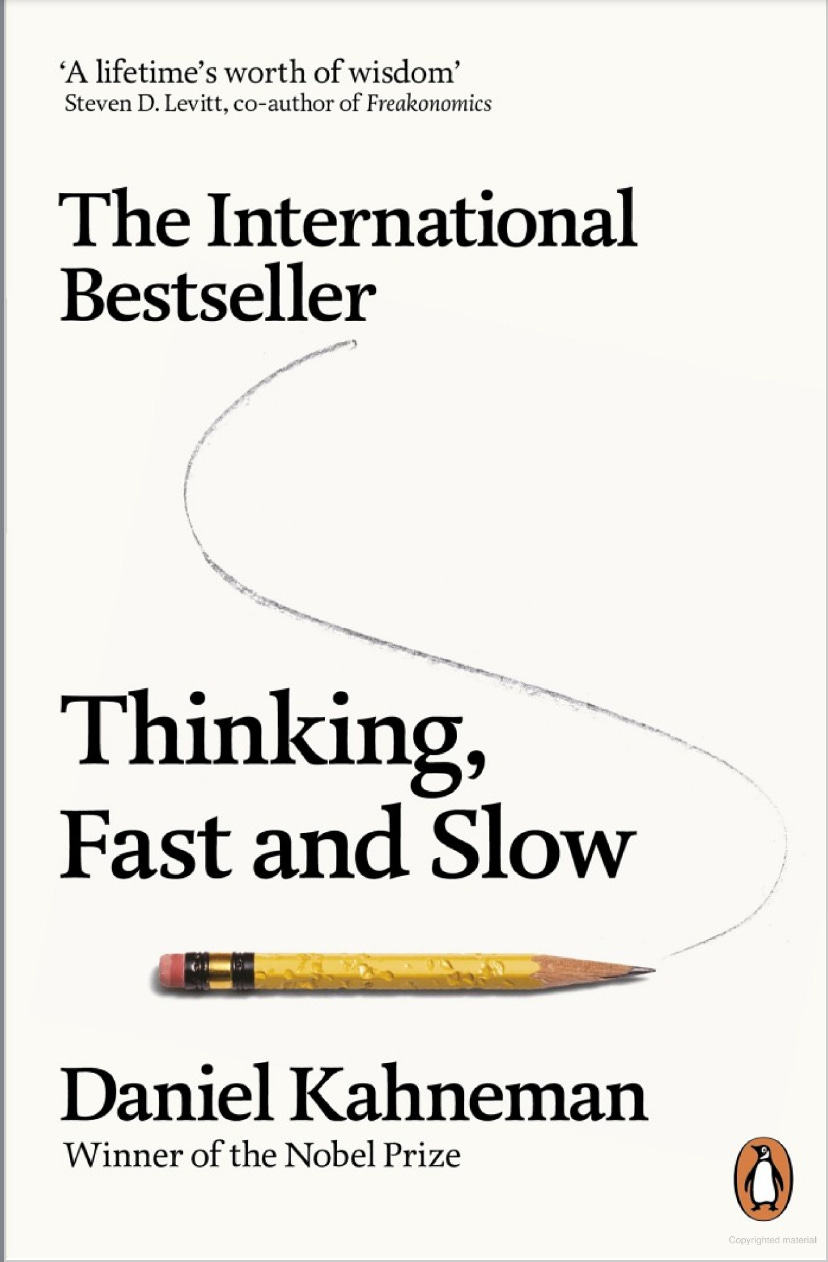How are you responding to bids for connection?
The Love Lab, social networks, and a couple of magpies
John and Julie Gottman are a couple renowned for their work in marital stability and romantic relationships. John Gottman started what became known as the ‘Love Lab’, where married couples would come in to be observed as they interacted with each other and discussed their relationship. Through his seminal studies, Gottman discovered a lot about what contributes to the happy and lasting variety of marriages and their unhappy, divorce-bound alternatives. In fact, his research (alongside Dr Robert Levenson) has culminated in the capacity to observe a couple for a very brief period of time and then, through an analysis of their interaction, predict the likelihood of that couple’s future success or divorce with incredible accuracy (in some research, at a rate of 80%, 90% or more).
One key concept emerging from Gottman’s research is the idea of ‘bids for connection’ as critical to relationships. Bids for connection are exactly what they sound like, and they can come in the form of large gestures or daily interactions, including questions, statements, or non-verbal cues. A bid is basically anything that involves one person putting something out there to invite the other into a moment of connection.
When you get home from work and your partner asks how your day went, this is a bid for connection. So, too, when they share a piece of good news with you, make a joke, or make an observation about how nice the petunias in the yard are looking today. In response to each of these, we may choose a reaction that is welcoming (e.g. building on the interaction, inviting more information, asking a question, or otherwise validating that person’s bid to connect). Or, we may not (e.g. dismissing or glazing over it, ignoring it, or invalidating it with condescension). And it appears that how we respond to these seemingly innocuous, day-to-day moments of interaction with our spouses matter - a lot. The Gottmans have found that successful couples tend towards their partners’ bids for connection on an average of 86% of occasions. Comparatively, less successful couples lean into bids only about a third of the time. At the crux of it all, I suppose, we might come to two questions:
1. How are you responding to your partner’s bids for connection? and
2. To what extent are you intentionally and thoughtfully contributing bids for connection in the relationship?
Relational matters matter
We know that connecting with others as part of a broader social network is a critical part of the human experience and one that significantly supports mental and physical wellbeing. With one study finding people with stronger social relationships at 50% lower mortality than those with weaker ties, we could even place a lack of connection up there with smoking and alcohol in terms of health risk. And, even at that weaker-connection level, we know that incidental social interactions with strangers and acquaintances also have extremely positive effects.
The Gottman findings, then, make intuitive sense when we consider what we know about human connection more broadly. It’s logical that what happens in and emerges from the space between two people in any sort of romantic relationship is incredibly important. Beyond this, though, what happens when we expand the Gottman findings to relationships outside of the spousal arena?
Filtering through the flurry of bids to connect
In 2024, we are overstimulated. Some suggest that the average office worker receives around 120 emails per day. Add to that the Zoom meetings, phone calls, text messages, Instagram comments, and all the other pings and ‘hellos’ and ‘just one quick question’s, and you have a giant stack of little pulls for attention from others.
I would be curious to know whether our capacity or inclination to generate and positively respond to bids for connection with others — partners, friends, coworkers — has declined in line with the increase in virtual communications over time. I wonder if, in the face of this constant flurry of bids to connect from others, we have to work even harder now to ensure we are engaging with and nurturing our relationships with intention and care. To put it another way:
Have we become so acclimated to constant pulls for attention from others that we’ve landed on a kind of relational version of the hedonic treadmill, where we are so immune to (or even inclined to chase the rush of) interpersonal bids for connection, that we stop seeing them as a prompt for investing properly in dyadic friendships, partnerships and peerships?
Research indicates that good friendships have a perceived equality of maintenance, and it’s worth reflecting on the quality of our closest connections. When a friend calls us to catch up, are we consciously being present with them and the conversation? Are we asking great questions (generating bids) and genuinely listening to and validating them (welcoming bids)? Are we turning towards their bids?
In the professional domain, we can ask the same. How are we inclined to respond to co-workers’ invitations to engage socially? Do we take the time to forge stronger ties with teammates beyond the task at hand? Or, do we throw those connections in the same bucket as all the other pulls for attention that prompt us into a default mode of ‘respond and move on’? If it’s the latter, we may be losing out on the potential benefits that come from filtering through the many attention-grabbing communications in our lives to focus on fostering deeper dyadic connections. More broadly, if we don’t reciprocate or respond well to bids from professional connections, it seems improbable that we’ll sustain a strong a network of relationships over the long term.
It’s worth being present with people, when we can. And sometimes, all that really means is responding to their bids for connection in a more welcoming and intentional way.
Bids to connect from the natural world
These two magpies have been visiting my balcony lately. It’s been happening for about a month now, usually on a weekend afternoon. Naturally, I’ve taken to befriending them with gusto: Whenever they arrive, I’ll drop everything to head outside with some seeds or maybe some mealworms. And then I’ll sit with them for a while.
When we think about our social networks, we focus on human to human relationships. But of course, these are not the only important relations that people maintain. We all have connections to the broader biosphere and the beings within it; and arguably, we cannot ever really disentangle the individual from their relationships and the broader system they interact with every day. Actor Network Theory is a helpful (albeit controversial) constructivist theoretical framework here: It’s a way of conceptualising how we go about the world with the underpinning idea that our networks contain a plethora of interrelationships between humans and, equally, nonhuman actants that also have agency. So we could consider, in our own networks, the people we interact with; but also the relationships that we maintain with animals, with flora, the broader natural environment, and even technological actants.
I like to consider my magpie visits as another bid for connection from the natural world. People who consider themselves beach bums would probably see a beautiful sunny day as a bid for connection, calling them to engage with the ocean. Plants, parks, pets, bugs; all potential actors in our network. In the modern day, I’d suggest that our relationships with the natural world and its bids for connection tend to be severely underexplored — and, for most of us (myself included), underfulfilled.
I’d love to know how you engage with natural world actors — reply to this email and let me know.
A small, meaningful action: Reflecting on your bids for connection
One obvious action for elevating bids for connection with those we care about is to apply more conscious intent in the moment to generating and responding to them. Beyond this, it may be a valuable reflection to explore your current context, and how you contribute to and welcome (or dismiss) bids for connection from the important members of your network. Consider, for example, asking yourself:
How would I describe how I currently respond to bids for connection from this actor?
How would I describe how I currently generate bids to connect with this actor?
Where are the opportunities?
in relation to individual network members that may include:
Your romantic partner
Your closest family member/s
Your closest friend/s
Your closest teammate/s
Your boss / direct report/s
Member/s of your community group
Important flora and fauna (specifically)
The natural world (generally)
A quote
“We are very good at preparing to live, but not very good at living. We know how to sacrifice ten years for a diploma, and we are willing to work very hard to get a job, a car, a house, and so on. But we have difficulty remembering that we are alive in the present moment, the only moment there is for us to be alive”
— Thich Nhat Hanh
A recommendation
Last month, the incredible Nobel-prize winning behavioural economist and psychologist Daniel Kahneman passed away. I don’t think it’s an overstatement to say that Kahneman’s work fundamentally changed how many of us think about thinking, and brought a whole lot of important concepts about decision-making and influence to the general public in an accessible way.
So, in this edition, I’m going to recommend his most well-known popular book: Thinking, Fast and Slow. If you are even slightly interested in decision-making and the heuristics and biases that influence our behaviour, you should read this excellent book.
Thanks so much for reading my newsletter!
Have an aspect of the human experience you’d like to explore in more depth? Have any other thoughts, questions or comments? Reply to this email and let me know.
Enjoy this post? It would mean a lot to me if you shared it with someone who may also find it valuable or interesting.
Someone send you this? Subscribe now to get the next one directly to your inbox. Subscriptions are free.
Any views expressed in this newsletter are my own and are not affiliated with any other institution, entity or person. Also, these newsletters contain generalised ideas and none of this material constitutes professional or specific advice of any kind.






And again it seems you have read my mind or at least have an uncanny intuition about what’s in my bedside reading pile. Beautiful piece Sonia and I love your questions. I regularly go to sleep with the Gottmans and their book The Seven day LOVE prescription - as a reminder to not take for granted all those ways in which love and relationships show up in my life. It’s my genuine attempt to be more present. I have also taken to hugging trees on my daily walks and imagining they are having a conversation with me. My attempt to move beyond the human consciousness and consider how we are all connected, in one big messy universe. ❤️💫🙏